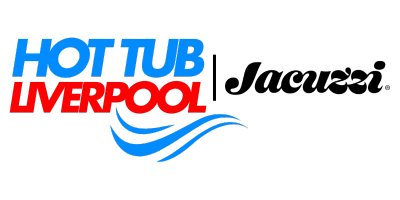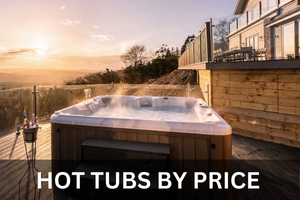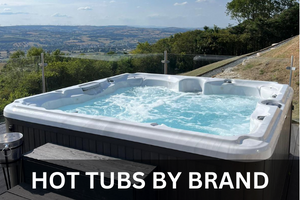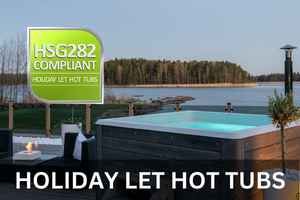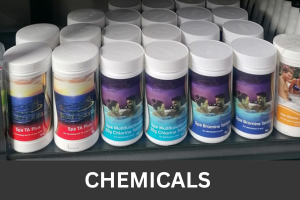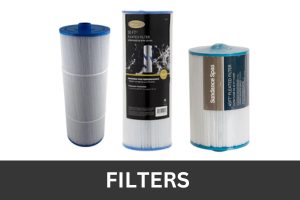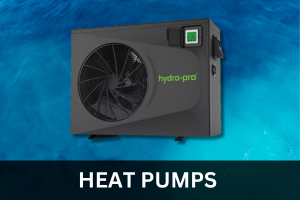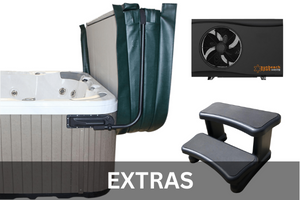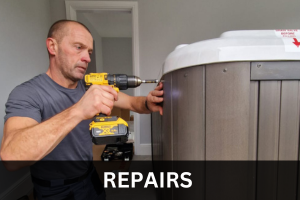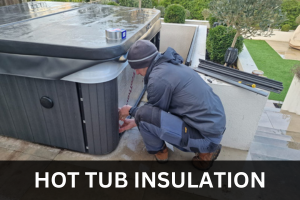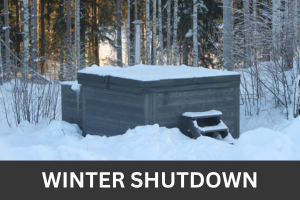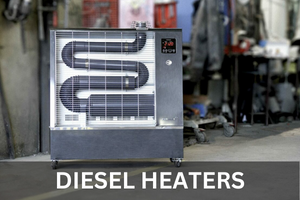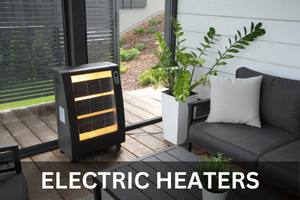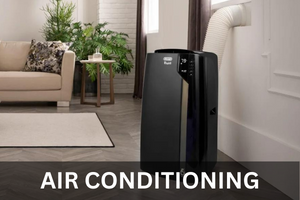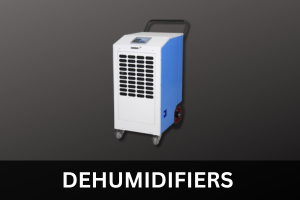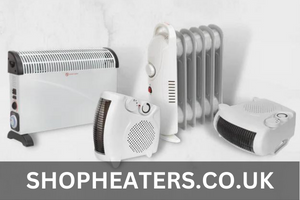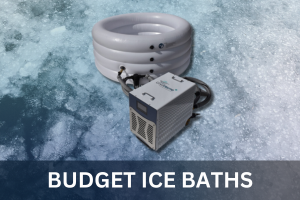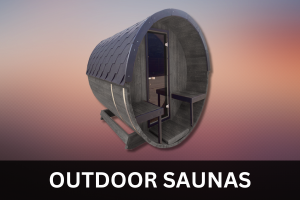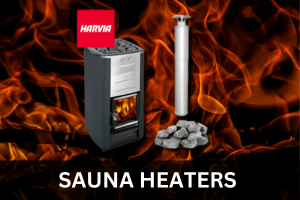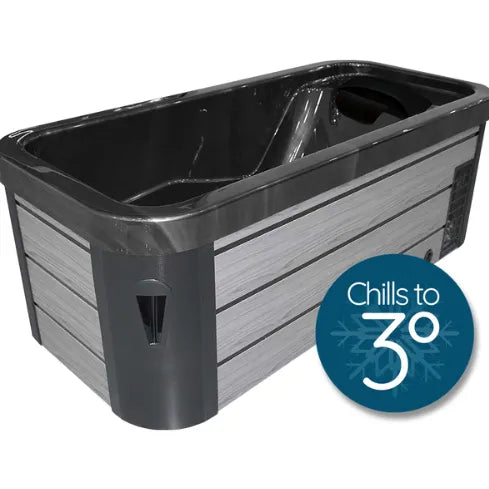

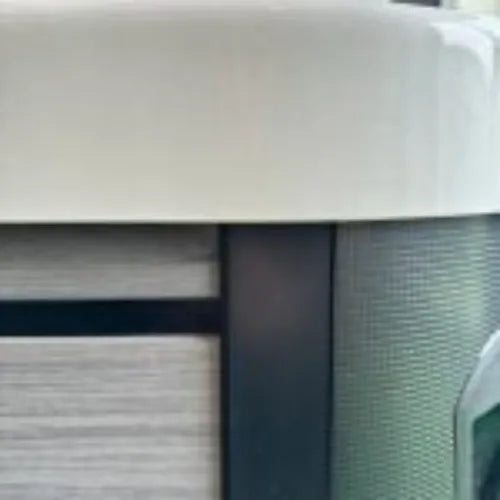
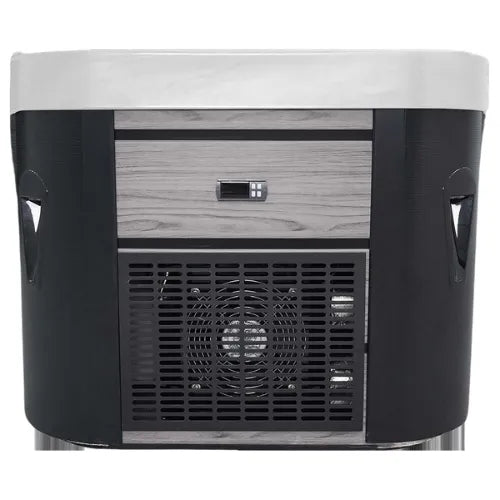
Invigorice Ice Bath
- Description
- Specification
INVIGORICE can enhance your recovery process, minimize muscle soreness, and promote restful sleep.
For those familiar with the fitness community online, the concept of ice baths and their significant benefits should not be news. Utilizing INVIGORICE ice baths can be a highly valuable asset in optimising your recovery following a workout.
With the use of a cold plunge pool from INVIGORICE, you can effectively increase circulation, reduce inflammation, and expedite muscle recovery. And don't worry, your body will adapt to the routine with ease.

Athletes and fitness enthusiasts commonly resort to ice baths to alleviate muscle soreness and inflammation caused by intense physical activity. Cold water immersion is believed to trigger blood vessel constriction and lower metabolic activity, thereby decreasing tissue breakdown and swelling.
Ice baths have been recommended by experts as a post-workout recovery method, with the ideal temperature range being between 10-15 degrees. However, endurance athletes may benefit more from a temperature as low as 3 degrees. Our chiller control system is customised to keep your bath at this optimal temperature, catering to all users. We have also added LED lighting and hydrotherapy jets to enhance your experience. With our exclusive modern design, our ice bath will seamlessly fit into any interior or exterior space.

SPECIFICATION
| DIMENSIONS | 1815 x 845 x 750mm |
| WATER CAPACITY | 240 Litres |
| SEATS | 1 Seat |
| ACRYLIC | USA Aristech Acrylic |
| AMP SYSTEM | 13 Amp |
| CHILLER CONTROL SYSTEM | Customised Chiller Control System |
| PUMP | Circulation Pump Large |
| LIGHTING | LED Lights/Corner Lights/Water Perimeter Lights |
| OZONE SYSTEM | Yes |
| FILTER SYSTEM | Yes |
| INSULATION | 30mm |
Frequently Asked Questions
-
Cryotherapy is the application of cold to produce a cold induced therapeutic effect.
Any temperature below the temperature of the skin, typically around 30°C / 86°F, can be considered to be cryotherapy though temperatures above 15° or 20°C / 60°F or 70°F will only have a mild effect.
Low temperature hydrotherapy is typically between 5°C / 40°F and 12°C / 55°F
Air temperatures can go as low -150°C / -200°F as air has a very low thermal conductivity (air is an insulator) but at these extreme temperatures cooling is solely by conduction to avoid severe frostbite.
-
Cold water immersion, or ice baths, help reduce tissue swelling due to muscle breakdown and micro tears that occur during intense, or lengthy, physical activity and, also, help to control inflammation.
Some inflammation is a good thing but too much can lead to secondary damage or hypoxic injury.
The mechanisms include aiding normalization of body temperature, flushing out muscles due to constriction of blood vessels & compression through hydrostatic pressure, a decrease in metabolic activity, balancing of the sympathetic & parasympathetic systems and a reduction in muscle damage.
-
The therapeutic effect is a factor of temperature and time. The colder it is, and the more penetrating that cold, then less time is required to cool the tissue to a therapeutic level.
Traditional ice baths consisted of adding ice to water and depending on the amount of ice versus the amount of water these ice baths could be as high as 10 or 12C [50 – 55F]. In these circumstances, the recommended dosage varied from 10 to 15 or even 20 minutes.
With modern digitally controlled ice baths, or CryoSpas, which chill by conduction and convection [i.e. the jets are creating a ‘wind chill’ effect], the average treatment time is typically 3 to 6 minutes.
-
What is the optimum temperature for ice bath recovery?
-
Cold water immersion or ice baths, help reduce tissue swelling due to muscle breakdown and micro tears that occur during intense or lengthy physical activity and, also, help to control inflammation.
Some inflammation is a good thing but too much can result in secondary damage or hypoxic injury.
The mechanisms include aiding normalisation of body temperature, flushing out muscles through the combination of hydrostatic pressure and cold induced blood vessel constriction, a decrease in metabolic activity, balancing of the sympathetic & parasympathethic systems and a reduction in muscle damage.
-
Sports recovery i.e. post-exercise recovery is a non-medical application for CryoSpa therapy.
However, treatment of soft tissue injuries such as tendon & ligament sprains is considered to be medical use.
In the USA, the FDA, which approves devices & medicines for medical use, have exempted hydrotherapy, such as CryoSpa therapy, from Medical Device Approval requirements due to the low risk to patients and the non-invasive nature of the therapy. Consequently, CryoSpa therapy is available for medical use throughout the USA.
In other countries that adopt FDA guidelines this rule will also apply.
In the EU hydrotherapy is not exempt from medical device approval so a manufacturer cannot make medical claims for such devices.
-
The theory behind contrast bathing is that the hot water stimulates vasodilation of the blood vessels near the surface of the skin and when followed by immersion in the cold water ,which causes vasoconstriction, a ‘pumping action’ ensues, which increases blood circulation.
Typically, contrast bathing would consist of several cycles e.g. 1 or 2 minutes hot followed by 1 minute cold and repeated 3 times.
In a sporting context contrast bathing is used by some elite sports clubs as an alternative to cold water immersion alone.
There is also some research which supports the theory that the cold is the more critical element and where an athlete has a sustained soft tissue injury with symptoms including a combination of pain, heat & inflammation the application of additional heat would be contra-indicated during the acute phase of the injury (typically the first 48 to 72 hours).
Some research studies have also supported the theory that thermal stress positively influences the auto-immune system.
-
A type of tendonitis, tennis elbow can cause intense pain and while it is more common in people over 40 it can occur at any age.
It is the most common reason that people visit a doctor with elbow pain.
Healing of tendons and ligaments is much slower than muscle injuries due partially at least to the low blood flow in this type of tissue.
Typical interventions include strapping to minimise movement in the elbow and the taking of pain killers and anti-inflammatories alongside the application of cold. The bag of frozen peas being a common diy treatment.
The CryoSpa Mini offers much faster resolution of tennis elbow and similar elbow issues such as golfer’s elbow and pitcher’s elbow due to the intense penetrating cold.
Three or four sessions of typically 3 minute duration has been seen to have a dramatic impact on elbow pain.
The CryoSpa Mini may also be useful as a preventative modality for those at risk of over-use injury in particular competitive tennis & golf players and baseball pitcher’s.
-
It is quite commonly stated that ice baths reduce lactic acid but this is not the case. Lactic acid, or lactate, occurs when the body gets into an oxygen debt situation i.e. is functioning anaerobically. When the level of activity ceases, or reduces sufficiently, in simple terms the body can acquire surplus oxygen, which is used to convert the lactic acid back to its normal pyruvate / pyruvic acid state.
According to Gregory Dupont, who presented at the FIFA sponsored Sports Injury Summit held at Wembley in 2013 the main precursor of injury is fatigue. Further research investigated the common strategies for aiding recovery, minimising fatigue and, thereby, lowering the risk of injury.
The conclusion was good diet, good sleep, hydration [all lifestyle factors] plus cold water immersion were the main scientifically proven methods of aiding recovery and minimising fatigue.
The other side of the coin is performance and here we find that fatigue inhibits performance. So if we can manage fatigue by improving fitness and aiding recovery the outcome is improved performance and lowered risk of injury.
-
The debate on the use of ice baths, or cold-water immersion, rages on with many pundits claiming it is good and others claiming it is not.
The answer depends on the stage of training the athlete is at and the main objective of that training block.
If you are in the pre-competition phase of training and the main objective is to build power then there is research indicating that ice baths (and other micro-strategies for minimising training responses, such as anti-oxidant supplementation) during this phase may limit the adaptation effect i.e. your muscles will adapt to the increased workload faster if the body is allowed to contend with the inflammation and micro-tears naturally without the intervention of cold water immersion.
However, if you are tapering the workload toward an upcoming competitive event or if you are in the competitive part of the season then the main focus shifts to recovery and minimising fatigue rather than power building and in these circumstances research indicates the use of ice baths will be beneficial.
The key word here is fatigue. Fatigue is the main precursor of injury and is also a major performance inhibitor. Consequently, the fitness coach’s objective is to maximise fitness and minimise fatigue in order to maximise performance and lower the risk of injury.
And the main strategies for combating fatigue: Good Sleep, Good Diet, Hydration and Cold Water Immersion [per Gregory Dupont, FIFA Sports Injury Summit, Wembley Stadium, April 2013].
The argument is further complicated in team sports where skill, tactics and pre-planned moves need to be coached on the training pitch. In these sports the coach will want the players to be mentally alert and physically prepared to benefit fully from the coaching session, not hobbling around only partially recovered from the previous day’s training. In this instance, there may be a conflict of interest where the fitness coach is trying to maximise adaptation while the team coach wants the players recovered sufficiently to benefit fully from the training session, therefore, CWI may be strategically used to fit the on-going training session plans rather than eliminated to cater for both objectives.
So are ice baths good or bad?
The answer depends on the part of the season and the main objective of the current training regime. In the competitive phase of the season the use of ice baths will help minimise fatigue and aid recovery, thereby improving performance and lowering the risk of injury. In the pre-season, or power-building phase, of training the use of ice baths may adversely affect the adaptive response.
So, as with most tools in the athlete preparation toolbox, it is how the coach uses CWI to best effect, rather than whether it is appropriate to use it or not!
